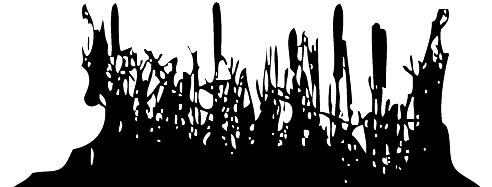Français
Finding Our Talk Season Two
- Episode 1: A Brighter Future - Mohawk
- Episode 2: Gentle Words - Maliseet
- Episode 3: The Spirit of Stories - Ojibway
- Episode 4: Language of The North - Naskapi
- Episode 5: Language of The Caribou People - Gwitchin
- Episode 6: Our Past Our Language - Secwepemc (Shushwap)
- Episode 7: Buffalo People - Dakota
- Episode 8 : Healing Power of Words - Dene
- Episode 9: Our Music is Our Language - Oneida
- Episode 10: Words from Our Scholars - Cree
- Episode 11: Words from Our Elders - Blackfoot
- Episode 12: Cultural Centres and Language
- Episode 13: The Dreamers - Dane-Zaa
Finding Our Talk Season One
Finding Our Talk Season Three
Episode 1: A Brighter Future - Mohawk
The focus of this episode looks at the young people of both Kanehsata:ke and Kahnawake, two Mohawk communities located in Quebec. These communities have been instrumental in providing Mohawk immersion programs within their communities for a number of years. Students who attended these schools currently or in the past are the focus of this episode. We look at how the Mohawk language, Kanien'kéha plays in the life of these young people today.
Background
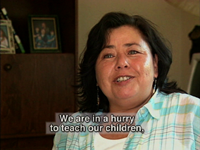 Through a series of circumstances, both social and political, the community of Kanehsata:ke and Kahnawake began to take strides in reclaiming the Mohawk language. The communities currently have their own full immersion programs for high school students as well as primary grades. The community of Kanehsata:ke is well known as the place of the 1990 Oka crisis that saw a standoff between the army and Mohawk people over the protection of their sacred pine forests. The crisis brought many changes for both Mohawk communities and other First Nations across the country, such as the Royal Commission on Aboriginal Peoples.
Through a series of circumstances, both social and political, the community of Kanehsata:ke and Kahnawake began to take strides in reclaiming the Mohawk language. The communities currently have their own full immersion programs for high school students as well as primary grades. The community of Kanehsata:ke is well known as the place of the 1990 Oka crisis that saw a standoff between the army and Mohawk people over the protection of their sacred pine forests. The crisis brought many changes for both Mohawk communities and other First Nations across the country, such as the Royal Commission on Aboriginal Peoples.
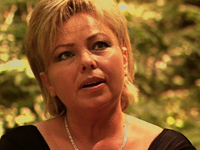 Part 1
Part 1
The community of Kanehsata:ke eyes a brighter future as the community awaits the opening of a new immersion school being built at the site of the 1990 Oka Crisis. Roti’wanahente “We are responsible for carrying on the language” is being built among the very pines the community fought to protect and will open in the Fall of 2001. Students from nursery to grade six will study completely in Mohawk. The building of the school has been a community effort since the beginning, according to Rodney Hill, Construction Coordinator. Parents and children alike decided on the layout and features of the school and utmost care was taken to preserve the sacredness of the pines.
Two students eagerly awaiting the beginning of school are Shelby and Sammy, first cousins. We will meet them and talk to their parents about why they decided to send them to Immersion school. We will also talk to Sammy’s father, Steven Bonspille, a councilor and Director of the Cultural Center about the Band Council’s position onlanguage,in light of a recent funding cut. We will get to meet some staff of Roti’wanahente including teachers Mary Cree and Gloria Nelson, two Mohawk Immersion teachers who share the same love of passing the language on to the younger generation and principal Wathahine Nicholas, who was responsible for bringing Mohawk Immersion to Kanesata:ke.
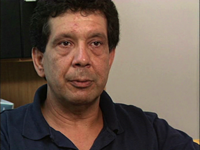 Part 2
Part 2
Located in the community of Kahnawake is the “Your Movies...Your Way” project which is funded under the Brighter Futures program. “Your Movies...Your Way” is a six month program for youth, between the ages of 13 - 20, an extra curricular program where they have an opportunity to make their own small video productions. The project is now in its third year of operation and coordinated by Marion Delaronde. Marion started the project after realizing that there were no programs available for young people in the community. Through her own experience of learning and going to school to learn animation, she created the project on her own. The original idea for the program was to have 25% of the video projects be in the language. Although that goal has not been met, students take the opportunity to incorporate the language where ever they can.
Through this youth group we get to meet the young people of Kahnawake as we look at how language plays in their lives outside of the school system. The students will discuss the importance of the Mohawk language, the immersions schools, their parents, grandparents.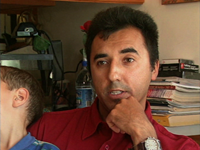
It is here we meet Dega Lazare, a young aspiring filmmaker. His influences of Hollywood movies is evident in his various low budget video productions he has made through the program. We see Dega as he currently works on his latest creation that uses words in Mohawk from filming to editing. One of his past videos was an animation piece about aliens invading Earth and the aliens only speak in the Mohawk language, with help of self made cue cards as subtitles. We focus on Dega's work in video production and the use of language and we also visit him at home to meet his parents who see language as an important issue. We also meet Dega's grandmother, a fluent Mohawk speaker who has helped him to translate his scripts in the language.
Like most of the students in Kahnawake, Dega is currently enrolled at the Survival School that offers Mohawk immersion program. But also like many students that come out of the program, using the language on a daily basis is a challenge. We also have the opportunity to look at the lives of other youth from the group, such as Katsitsanoron McGregor who is also a student of the Survival School.
Language keeper
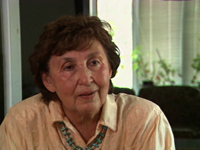 Skawen:nati Montour is a Mohawk translator who works at the Language/Curriculum/Resource centre. She was also instrumental in the establishment of the Kahnawake Survival School. An important figure in the eyes of her grandson Ioron:rote, he credits her with passing on the language to him. We sit with Skawen:nati and her grandson, a Mohawk teacher, as they talk about what language means to them.
Skawen:nati Montour is a Mohawk translator who works at the Language/Curriculum/Resource centre. She was also instrumental in the establishment of the Kahnawake Survival School. An important figure in the eyes of her grandson Ioron:rote, he credits her with passing on the language to him. We sit with Skawen:nati and her grandson, a Mohawk teacher, as they talk about what language means to them.
